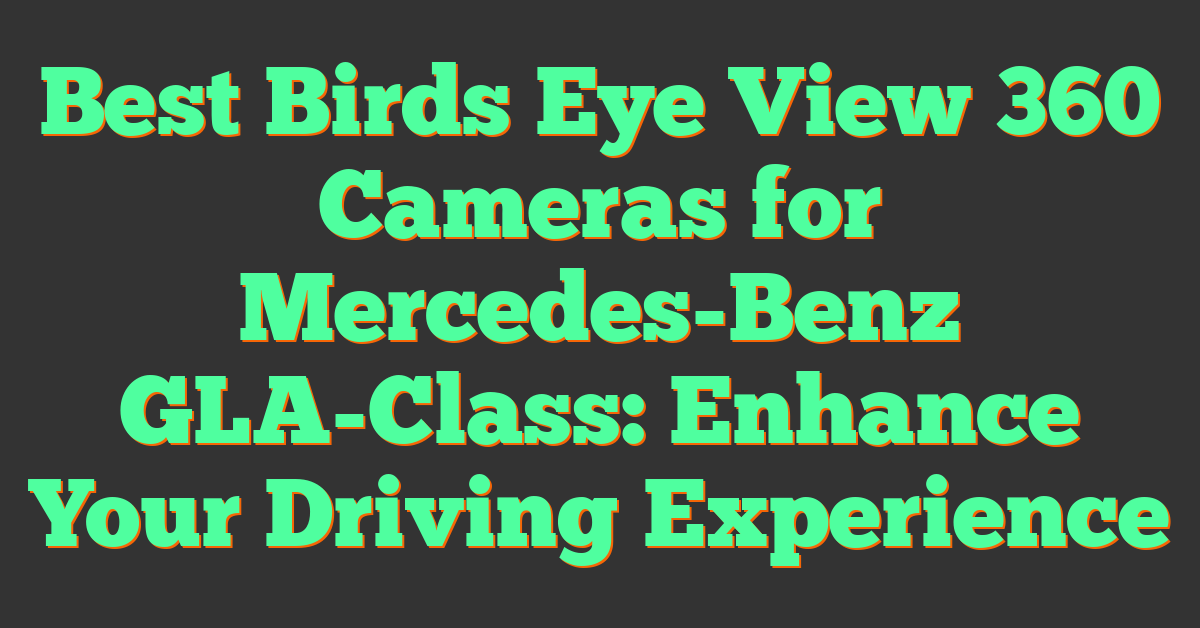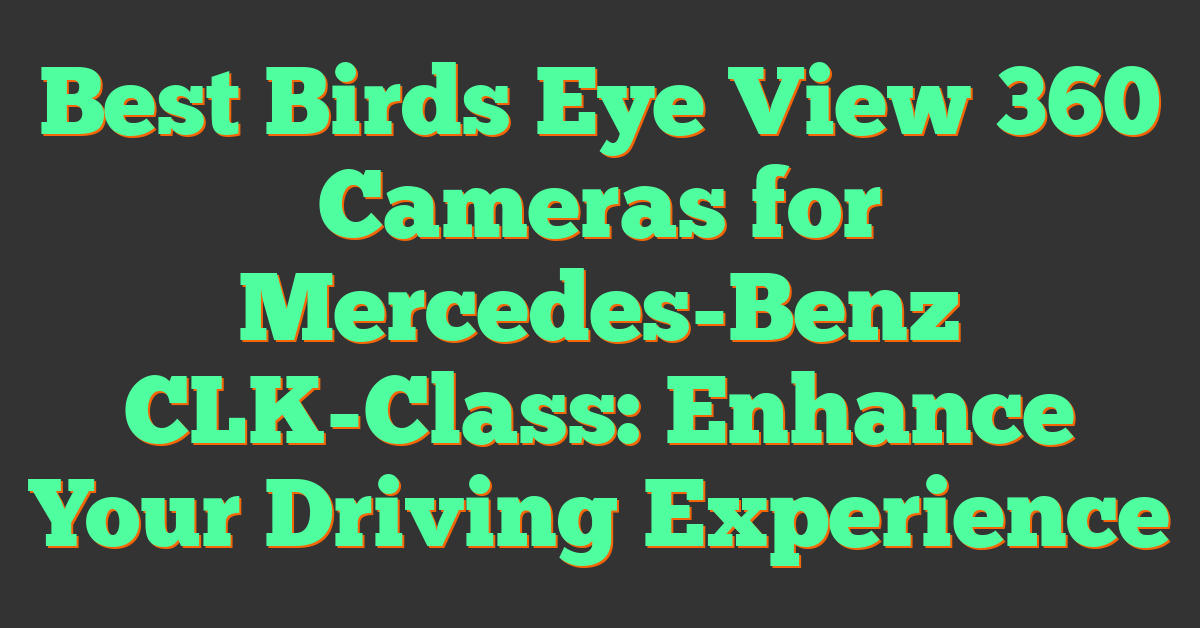Key Takeaways
- 360 cameras offer a unique perspective on photography, capturing fully immersive, spherical views that traditional cameras can’t achieve.
- Key features like high resolution, stabilization, and real-time editing tools enable photographers and videographers to create interactive content for VR, social media, and creative storytelling.
- Popular models like the Insta360 ONE X3, GoPro MAX, and Kandao QooCam 8K provide diverse options for beginners and professionals, with varying features, resolutions, and price points.
- Challenges like image stitching, battery life, and cost remain hurdles, but advancements in AI, modular designs, and extended battery life aim to address these issues.
- 360 cameras are transforming both casual and professional photography, offering creative possibilities for virtual tours, action footage, and immersive content creation.
- Future trends, including AI-powered editing and enhanced resolution, promise to push the boundaries of 360-degree photography even further.
Photography’s constantly evolving, and 360 cameras are taking it to a whole new level. These innovative devices let you capture everything around you in a single shot, creating immersive images and videos that traditional cameras just can’t match. Whether you’re documenting adventures, enhancing your social media, or exploring creative storytelling, 360 cameras are transforming how we see and share the world.
I’ve been fascinated by how these cameras make photography more interactive and engaging. From travel enthusiasts to content creators, everyone’s finding new ways to use them. Curious about how they work and why they’re gaining popularity? Let’s dive into the world of 360 cameras and discover why they’re becoming a game-changer in modern photography.
What Are 360 Cameras?
360 cameras capture full, spherical views of a scene, offering an immersive experience that traditional cameras can’t match. These devices are transforming how we record and share memories, blending creativity with technology.
Defining 360 Cameras
A 360 camera is a device equipped with multiple lenses, usually two or more, capable of capturing a 360-degree field of view. Unlike regular cameras that frame one perspective, 360 cameras photograph or record everything around them simultaneously. The result is an interactive image or video that viewers can explore by panning or scrolling to see different angles.
Many models produce footage formatted for platforms supporting immersive content like virtual reality (VR) and social media. Examples include devices by GoPro, Insta360, and Ricoh, which are popular options due to their portability and advanced features.
How 360 Cameras Work
360 cameras use dual-lens systems—or more advanced arrays—to capture overlapping fields of view. Each lens typically covers 180 degrees or more, and internal software stitches these captured images together seamlessly. This stitching process combines the perspectives into a single, spherical output.
Modern devices rely on advanced algorithms and sensors to enhance image quality, correct distortion, and adjust lighting. Some models integrate GPS for geotagging, stabilization for smooth footage, or microphones for capturing spatial audio, creating an engaging, multidimensional visual experience. For example, Insta360’s FlowState stabilization ensures dynamic shots remain steady, even when handheld.
Key Features Of 360 Cameras
Understanding the key features of 360 cameras can help photographers and videographers maximize their potential. These features enhance creative possibilities and deliver high-quality results.
Image Quality And Resolution
Image clarity in 360 cameras depends heavily on resolution, with many models offering 5.7K to 8K video resolution and a minimum of 18MP photo output. High resolutions ensure crisp details across the entire spherical capture, reducing pixelation and enhancing clarity during zoom-ins. Cameras like the Insta360 X3 utilize advanced HDR modes, improving dynamic range and color accuracy, even in challenging lighting. Image sensors with wide aperture settings also enable better low-light performance.
Field Of View And Coverage
« Underwater 360 Cameras: A Diver’s Review of the Best Models & Must-Have Features
Action vs. VR 360 Cameras: Which One is Right for Your Adventures? »
The hallmark of 360 cameras is their ability to capture a full 360° field of view. Dual-lens systems generally cover overlapping 190° fields, stitched together for a seamless spherical view. Wider coverage eliminates blind spots, making 360 cameras ideal for immersive projects like virtual tours or action sequences. For example, the GoPro MAX offers customizable modes like “Narrow” or “SuperView,” enhancing flexibility for different shooting scenarios without losing the spherical panorama.
Connectivity And Compatibility
Modern 360 cameras feature advanced connectivity options for a seamless workflow. Most models support Wi-Fi and Bluetooth for instant sharing or remote control. Apps provided by camera manufacturers, like Insta360 app or Ricoh Theta app, allow real-time stitching, editing, and sharing. USB-C and microSD support simplify data transfers and storage. Platforms like YouTube and Facebook offer direct integration, making 360 content upload-ready. Models like the Theta Z1 also support RAW image formats for professional-grade post-production.
Benefits Of Using 360 Cameras
360 cameras revolutionize how we capture and experience moments. They bring unmatched creativity and versatility to photography and videography by enabling immersive, interactive visuals.
Capturing Immersive Content
360 cameras excel at creating fully immersive photos and videos. By capturing a complete 360° field of view, they allow viewers to explore every angle of a scene, making it feel like they’re part of the moment. For instance, while photographing a mountain summit, the camera records the landscape, sky, and surroundings without excluding any perspective. These interactive visuals are ideal for virtual reality experiences or dynamic social media content, helping photographers and videographers connect with their audiences in new ways.
Enhancing Creative Possibilities
The unique capabilities of 360 cameras unlock endless creative opportunities. Features like time-lapse modes, tiny planet effects, and free reframing let you redefine perspectives in your projects. For example, I often use free reframing from raw footage to focus on key moments during editing, offering dynamic angles in a single shot. Tools like Insta360’s Shot Lab simplify creative editing, so users of all skill levels can experiment and refine their work. These features ensure flexibility, making it possible to stand out in competitive photography and videography industries.
Applications Beyond Photography
360 cameras serve diverse purposes beyond traditional photography and video-making. Their immersive content is essential for virtual tours in real estate, event documentation, and even training simulations. For instance, travel guides employ 360 visuals to give clients a virtual view of destinations, while architects use them for project walkthroughs. These cameras are also popular in live streaming, enabling creators to broadcast spherical, interactive videos that engage audiences globally. Their multipurpose design makes them invaluable tools for professionals and hobbyists alike.
Top 360 Cameras In The Market
As a photography enthusiast focused on immersive visuals, I’ve tested and reviewed multiple 360 cameras to identify the ones offering the best performance. Here’s an overview of some standout options.
Popular Models And Brands
Several brands are leading the 360 camera market with feature-rich models.
- Insta360 ONE X3: This model is highly regarded for its 5.7K 360 video resolution, easy reframing, and robust stabilization via FlowState technology. Its vibrant touch screen and waterproof design (up to 33 feet) make it versatile for adventure photography.
- GoPro MAX: With 5.6K resolution and dual 180° lenses, the GoPro MAX excels in creating dynamic spherical content. Its six-mic audio capture and HyperSmooth stabilization are standout features, ideal for action-packed video.
- Ricoh Theta X: Known for user-friendly shooting and excellent image quality, this camera offers 5.7K video, 60fps recording, and an intuitive interface. It’s best suited for professionals seeking detailed stills and smooth footage.
- Kandao QooCam 8K: Providing 8K resolution and 12-bit RAW photo support, the QooCam 8K delivers industry-leading clarity. Its depth-of-field capabilities and slow-motion recording push creative possibilities.
- Samsung Gear 360 (2017): While dated, this compact option remains a budget-friendly choice with 4K video capture and seamless integration within Samsung’s ecosystem.
Comparison Of Features And Pricing
Different models cater to varying needs and budgets, so understanding key features and costs is essential.
| Model | Video Resolution | Stills Resolution | Key Features | Price (Approx.) |
|---|---|---|---|---|
| Insta360 ONE X3 | 5.7K | 72MP | Waterproof, FlowState stabilization, reframing | $449 |
| GoPro MAX | 5.6K | 16.6MP | Six-mic audio, HyperSmooth, rugged design | $499 |
| Ricoh Theta X | 5.7K | 60MP | Pro-level stills, user-friendly interface | $799 |
| Kandao QooCam 8K | 8K | 20MP | RAW photo, cinematic depth-of-field | $579 |
| Samsung Gear 360 2017 | 4K | 15MP | Budget-friendly, Samsung ecosystem integration | $100 |
I’ll often recommend the Insta360 ONE X3 and GoPro MAX for their balance of features and versatility. Meanwhile, the Kandao QooCam 8K is perfect for professionals prioritizing ultra-high resolution. Comparing pricing and features helps photographers and videographers choose models aligning with their creative goals.
Challenges And Limitations
360 cameras have transformed how we capture the world, but they come with specific challenges that affect usability, output, and adoption. Here are a few limitations I’ve encountered in my work with these devices.
Image Editing And Stitching
Producing seamless spherical content relies heavily on precise image stitching. Internal software often struggles with stitching accuracy when lenses capture scenes with complex patterns, close objects, or inconsistent lighting. This can result in visible seams or distorted visuals. For instance, overlapping regions where the lenses meet can blur details if alignment isn’t perfect. Post-production tools like Adobe Premiere Pro and dedicated apps help refine stitches, but the process demands time and expertise. Photographers and videographers handling high-density textures or dynamic movement may experience added frustration in these scenarios.
Battery Life And Portability
360 cameras integrate advanced sensors and dual-lens systems, which consume significant power. Most models offer 60 to 90 minutes of continuous recording on a single charge, limiting usage during extended shoots or remote travel. Some models, like GoPro MAX, offer swappable batteries, but carrying extras adds bulk. Heat generation becomes another concern, particularly during long 4K or 5.7K recordings. While portability is a strength for devices like the Insta360 ONE X3, maintaining balance between compact designs and endurance still challenges manufacturers.
Accessibility And Cost
While versatile, 360 cameras remain a bigger investment compared to traditional photography gear. Premium models with features like 8K recording or waterproofing, such as the Kandao QooCam 8K, often exceed $800, making them less accessible for hobbyists. Entry-level cameras like Samsung Gear 360 provide affordability but lack advanced specs or future-proof capabilities. Moreover, proprietary software ecosystems tied to 360 cameras can limit compatibility with third-party platforms, further adding to the learning curve and cost for new users.
The Future Of Photography With 360 Cameras
360 cameras are redefining how we capture the world. As technology advances, these devices are set to break new ground by introducing innovative features and transforming both professional and casual photography.
Upcoming Innovations
Upcoming advancements in 360 cameras will enhance usability and creative possibilities. Artificial intelligence (AI) integration is expected to improve automatic editing, allowing users to effortlessly remove seams, stabilize footage, and identify key moments without manual intervention. Major brands are working on increasing resolution, with models aiming for up to 12K video and higher photo outputs for razor-sharp visuals. Extended battery life will make long shooting sessions seamless as manufacturers prioritize efficient energy consumption.
Foldable and modular designs might also change how we interact with these devices. Swappable lenses or compatibility with external sensors could open up new avenues for experimentation. Innovations like real-time 3D depth mapping and augmented reality (AR) tools are also shaping up to be game-changers, with applications for VR content production and immersive media. I’ve seen firsthand how these potential upgrades can elevate storytelling by making every frame richer and more engaging.
Transforming Professional And Casual Photography
Both professionals and enthusiasts are leveraging 360 cameras to explore new creative dimensions. In professional photography, 360 cameras are streamlining workflows for industries like real estate, tourism, and film production. Virtual tours and cinematic VR experiences are now quicker to produce, thanks to features like real-time geospatial tagging and automated scene stitches. For videographers, tools like hyper-lapse modes and advanced post-production capabilities make it easier to capture complex projects with minimal effort.
For casual users, 360 content elevates everyday moments. Compact, lightweight models with user-friendly apps mean anyone can capture immersive personal memories or unique social media posts. Features like free reframing allow photographers to compose shots after capture, offering unmatched flexibility in editing. People now approach photography not just as a documentation tool but as an interactive and shareable experience that captures entire environments instead of just fragments.
By bridging professional-grade performance and user-focused innovations, 360 cameras are fundamentally changing how we see and share the world.
Conclusion
360 cameras have truly redefined the way we capture and share our world. Their ability to deliver immersive, interactive visuals opens up endless creative possibilities for both professionals and hobbyists. Whether you’re documenting travels, creating virtual tours, or experimenting with dynamic social media content, these cameras offer a fresh perspective that traditional devices simply can’t match.
As technology continues to evolve, 360 cameras are becoming more powerful, accessible, and versatile. With innovations like AI editing, higher resolutions, and modular designs on the horizon, the future of photography looks more exciting than ever. If you’re ready to step into a new dimension of storytelling, there’s no better time to explore the potential of 360 cameras.














